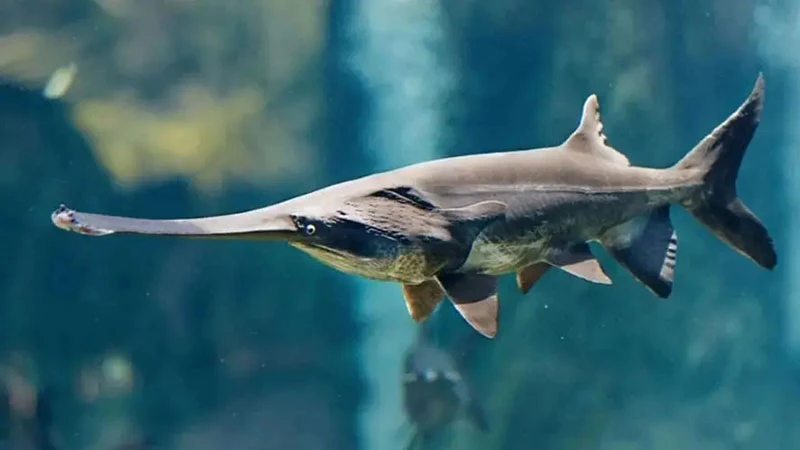Once revered as the "King of Freshwater Fish" and an emblem of China's rich aquatic biodiversity, the Yangtze white sturgeon’s disappearance raises pressing questions about the future of conservation efforts and the methods we employ to safeguard our natural heritage.
But what exactly does extinction mean in this context? Extinction refers to the complete absence of living members of a species in its natural habitat as well as in controlled breeding environments. In contrast, a species can be declared extinct in the wild if individuals exist only in captivity or controlled settings, highlighting the importance of preserving habitats and maintaining biodiversity.

The Causes Behind the Disappearance
The tale of the Yangtze white sturgeon is one marked by warning signs, many of which have been overlooked. Historically abundant in the Yangtze River, this fish was not only a significant part of the local ecosystem but also a staple for fishermen. However, a combination of factors—overfishing, habitat destruction, and pollution—led to its gradual decline.
Research indicates that the sturgeon population was still relatively stable in the 1970s, with catches reaching up to 25 tons per year. The turning point came in the early 1980s, when significant environmental changes began to affect the Yangtze River's ecosystem. An academic study highlighted that between 1981 and 2003, sightings of the sturgeon dwindled dramatically, with only a handful of observations recorded in the late 1990s.
Professor Wei Qiwei from the Chinese Academy of Fishery Sciences emphasized the inability of the sturgeon to reproduce as the main factor leading to its extinction. Their migration patterns were hindered by dam constructions and increased shipping traffic, which not only disrupted their spawning routes but also made them vulnerable to accidental capture.
The Broader Implications for Aquatic Biodiversity
The loss of the white sturgeon is not an isolated incident; it reflects a broader crisis affecting numerous freshwater species. The Yangtze River, once home to a staggering 48% of China’s freshwater fish, has seen drastic declines, with many species now teetering on the brink of extinction. A comprehensive report from the World Wildlife Fund (WWF) revealed that since the 1980s, more than 120 species of fish have vanished from the Yangtze, leaving the river's ecological health in peril.
Other species, such as the Chinese sturgeon and the Yangtze sturgeon, also face grim prospects. These species, like their white counterpart, require specific environmental conditions to thrive, making them especially vulnerable to human activities and climate change. While artificial breeding programs have shown promise, such as those initiated for the Chinese sturgeon, the numbers remain critically low. A recent monitoring effort identified only 15 individuals in the wild, none of which have successfully reproduced in the past five years.

^
The Path Forward: Lessons in Conservation
The extinction of the Yangtze white sturgeon serves as a stark reminder of the consequences of inaction in conservation efforts. However, it also presents an opportunity to reassess our strategies for protecting aquatic ecosystems. Governments and organizations have begun to take steps toward safeguarding these vulnerable species through various measures, including the prohibition of commercial fishing and the establishment of breeding programs.
For instance, since 2021, a ten-year fishing ban has been implemented across key areas of the Yangtze River to allow fish populations to recover. Additionally, policies like the Yangtze Protection Law and regulations on aquatic species management reflect a growing recognition of the need for rigorous environmental stewardship.
The collaborative efforts of scientists, policymakers, and conservationists are crucial in reversing the trends of biodiversity loss. Research conducted by WWF and multiple scientific institutions has outlined critical actions, such as restoring natural habitats, improving water quality, and maintaining connectivity between river systems to facilitate fish migration.
A Call to Action
As we reflect on the extinction of the Yangtze white sturgeon, the urgent need for effective conservation practices cannot be overstated. The loss of such an iconic species highlights a profound ecological shift and urges us to reconsider our relationship with nature. If we fail to protect the ecosystems that sustain us, we risk repeating the mistakes that led to the demise of the sturgeon and countless other species.
In the face of this growing crisis, it is imperative that we advocate for and implement comprehensive conservation strategies. By fostering a culture of environmental responsibility and awareness, we can hope to restore balance to our aquatic ecosystems and prevent the loss of more irreplaceable species.


